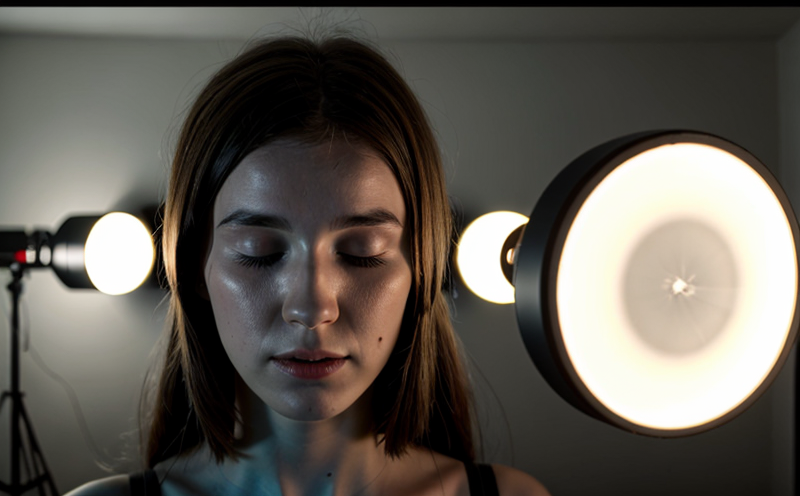EN 50507 Flicker and Stroboscopic Testing of Emergency Lighting
The CENELEC standard EN 50507 specifies the method for determining flicker and stroboscopic effects from lighting installations. This test is particularly crucial in ensuring that emergency lighting systems do not cause discomfort or potential hazards to occupants during critical situations, such as fire evacuations.
The significance of this testing cannot be overstated, especially when considering the role of emergency lighting in maintaining safety standards within buildings. The flicker and stroboscopic effects can lead to visual disturbances, which might impair visibility significantly. This can have dire consequences for individuals navigating through an emergency situation, as it directly affects their ability to perceive hazards accurately.
The standard covers various aspects that are pertinent to the testing of emergency lighting systems, including:
- Measurement of flicker and stroboscopic effects
- Determination of compliance with specified limits
- Recording of test results for documentation purposes
The methodology involves precise measurement techniques that ensure accurate evaluation. The testing apparatus used must meet strict international standards, such as ISO 21867 and IEC 60597, to provide reliable data.
Compliance with EN 50507 is essential for ensuring the safety and reliability of emergency lighting systems in numerous sectors, including commercial buildings, industrial facilities, healthcare institutions, and public spaces. The standard plays a pivotal role in safeguarding individuals' well-being by minimizing risks associated with visual discomfort.
The testing procedure typically involves exposing the specimen to controlled environments that simulate real-world conditions. This ensures that any flicker or stroboscopic effects are accurately captured under relevant circumstances. The process of specimen preparation is critical, as it directly influences the test results and subsequent interpretation.
Understanding the implications of flicker and stroboscopic effects on human perception is vital for effective testing. Flickering light can cause visual discomfort, while stroboscopic effects may lead to misperception or loss of balance in individuals. These factors are especially critical in emergency situations where quick and accurate responses are necessary.
The importance of this test cannot be understated, as it ensures that the lighting systems meet safety standards and provide reliable performance during emergencies. The standard's rigorous methodology guarantees consistent and accurate results, contributing to a safer environment for all occupants.
Scope and Methodology
The scope of EN 50507 encompasses the evaluation of flicker and stroboscopic effects from lighting installations within emergency lighting systems. This includes:
- Determination of flicker frequency and intensity
- Evaluation of stroboscopic effects on human perception
- Assessment of compliance with specified limits
The methodology for conducting this test involves several key steps, each designed to ensure accurate and reliable results. These include:
- Setting up the testing apparatus according to international standards
- Exposing the specimen to controlled environments that simulate real-world conditions
- Recording and analyzing the data obtained from the tests
The standard specifies detailed procedures for each step, ensuring consistency and accuracy. The use of appropriate instrumentation is critical in capturing precise measurements, which are then analyzed to determine compliance with specified limits.
The testing process involves exposing the specimen to controlled environments that simulate real-world conditions. This ensures that any flicker or stroboscopic effects observed are accurate representations of what might occur under actual usage scenarios. The data collected during these tests is meticulously recorded and analyzed to provide comprehensive insights into the performance of emergency lighting systems.
The methodology for conducting this test is designed to be rigorous, ensuring accurate and reliable results. Compliance with international standards guarantees consistent and dependable outcomes. This approach not only enhances the reliability of the testing process but also ensures that the results are credible and trustworthy.
Why Choose This Test
- Ensures Safety and Reliability: The test guarantees that emergency lighting systems meet safety standards, thereby ensuring reliable performance during critical situations.
- Precise Measurement Techniques: Utilizing precise measurement techniques ensures accurate evaluation of flicker and stroboscopic effects.
- Compliance with International Standards: Compliance with international standards guarantees consistent and dependable outcomes.
- Rigorous Methodology: The rigorous methodology enhances the reliability of the testing process, ensuring that results are credible and trustworthy.
The test is particularly important for quality managers, compliance officers, R&D engineers, and procurement personnel who need to ensure that emergency lighting systems meet stringent safety standards. By choosing this test, organizations can demonstrate their commitment to safety and reliability in the design and operation of emergency lighting systems.
Furthermore, the test helps in identifying any potential issues with flicker or stroboscopic effects, ensuring that the lighting systems perform optimally under critical conditions. This not only enhances the safety of occupants but also improves overall building performance by minimizing risks associated with visual discomfort.
International Acceptance and Recognition
The EN 50507 standard is widely recognized and accepted across various sectors, including commercial buildings, industrial facilities, healthcare institutions, and public spaces. Its rigorous methodology ensures consistent and reliable results, which are crucial for maintaining safety standards in emergency lighting systems.
Compliance with this standard demonstrates a commitment to high-quality lighting solutions that meet international safety and reliability benchmarks. This is particularly important for organizations seeking to enhance their reputation and ensure compliance with regulatory requirements.
The widespread acceptance of EN 50507 underscores its relevance and importance in the field of emergency lighting systems. By adhering to this standard, organizations can demonstrate their commitment to safety and reliability, thereby enhancing trust and credibility among stakeholders.





